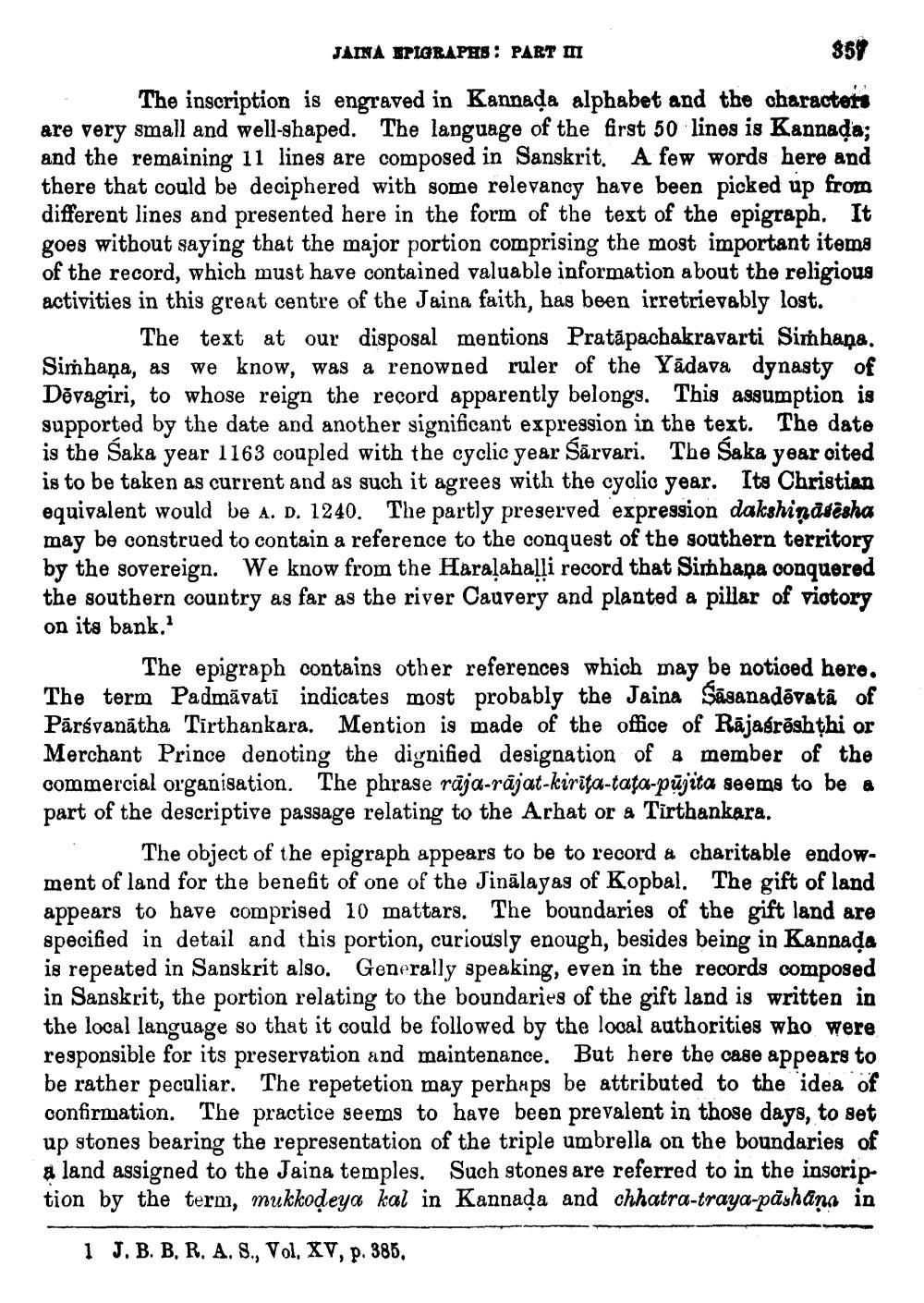________________
JAINA MPIGRAPHS : PART II
859
The inscription is engraved in Kannada alphabet and the characters are very small and well-shaped. The language of the first 50 lines is Kannada; and the remaining 11 lines are composed in Sanskrit. A few words here and there that could be deciphered with some relevancy have been picked up from different lines and presented here in the form of the text of the epigraph. It goes without saying that the major portion comprising the most important items of the record, which must have contained valuable information about the religious activities in this great centre of the Jaina faith, has been irretrievably lost.
The text at our disposal mentions Pratāpachakravarti Simhana. Simhaņa, as we know, was a renowned ruler of the Yādava dynasty of Dēvagiri, to whose reign the record apparently belongs. This assumption is supported by the date and another significant expression in the text. The date is the Saka year 1163 coupled with the cyclic year Śārvari. The Saka year cited is to be taken as current and as such it agrees with the cyclic year. Its Christian equivalent would be A. D. 1240. The partly preserved expression dakshinasesha may be construed to contain a reference to the conquest of the southern t by the sovereign. We know from the Haralahalli record that Simbana conquered the southern country as far as the river Cauvery and planted a pillar of viotory on its bank."
The epigraph contains other references which may be noticed here. The term Padmāvati indicates most probably the Jaina Šāsanadôvatā of Pārsvanātha Tirthankara. Mention is made of the office of Rājasröshthi or Merchant Prince denoting the dignified designation of a member of the commercial organisation. The phrase rāja-rajat-kirita-tata-pujita seems to be a part of the descriptive passage relating to the Arhat or a Tirthankara.
The object of the epigraph appears to be to record & charitable endowment of land for the benefit of one of the Jinālayas of Kopbal. The gift of land appears to have comprised 10 mattars. The boundaries of the gift land are specified in detail and this portion, curiously enough, besides being in Kannada
Sanskrit also. Generally speaking, even in the records composed in Sanskrit, the portion relating to the boundaries of the gift land is writte the local language so that it could be followed by the local authorities who were responsible for its preservation and maintenance. But here the case appears to be rather peculiar. The repetetion may perhaps be attributed to the idea of confirmation. The practice seems to have been prevalent in those days, to set up stones bearing the representation of the triple umbrella on the boundaries of & land assigned to the Jaina temples. Such stones are referred to in the inscription by the term, mukkodeya kal in Kannada and chhatra-traya-påshana in
1 J. B. B. R. A. S., Vol. XV, p. 385.




